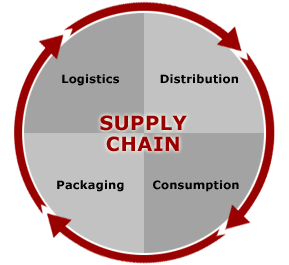The article below caught my eye as I was browsing through the latest news on supply chain. In a gist, it talks of a book that professes to be the go-to asset in helping supply chain leaders improve their game. Having just read the articles on the dabbawallas of Mumbai for tomorrow's class, it got me wondering if such a book boasting of an innovative approach to supply chain management is really the treasure of knowledge it claims to be? Mukadams rose from the ranks of the dabbawallas to become respectable supply chain managers of the wide network of the dabbawalla industry. I am quite sure they did not go through any formal schooling to learn supply chain by the book. Rather, they learnt to apply its concepts to the art of exceptional food delivery the hard way -- through actual experience. In the end, they proved to be just as effective, or even better, in supply chain management enough for the world to notice.
While the type of work will always be different for every problem requiring a solution, the basic concept of simplicity as set by the dabbawallas must serve as a guide for us to always keep in mind that customer satisfaction may be achieved in many ways, but the most important thing is that we DO achieve it. Do we really need all the jargons of the trade that we so often hear? Maybe. Maybe not. I do believe simplicity holds the key, and we are better off just understanding the basics - like what our clients really need. That's not a bad place to start. If you think about it, customer satisfaction is and remains to be the ultimate goal of all supply chains anyway.
http://www.nextlevelpurchasing.com/supply-chain-news.html
- New Procurement Book Revolutionizes Learning For Supply Chain Leaders
Pittsburgh, PA - January 3, 2012 - While many of the procurement books out there are dry and often snooze-inducing, an exciting, new book released today has finally made learning how to implement procurement best practices fun. Next Level Purchasing founder Charles Dominick, SPSM, SPSM2 and Dr. Soheila Lunney, SPSM, have co-authored, "The Procurement Game Plan: Winning Strategies and Techniques for Supply Management Professionals" - a fresh, innovative text that combines step-by-step procurement techniques with sports analogies for a reading experience that is as entertaining as it is educational.
Sure to become a go-to asset, "The Procurement Game Plan" encourages procurement leaders and practitioners to "take the ball" by offering an easy-to-follow game plan with strategies that can be implemented to improve supplier relations, achieve measurable cost savings, reduce risk, and attain operational efficiency. These strategies ultimately lead to improved margins and competitiveness for the organizations of the procurement leaders who implement them. "The Procurement Game Plan" is the guide that all procurement professionals need to take their performance to the next level.
"The Procurement Game Plan" has already begun receiving rave reviews from industry leaders, including R. Gregg Brandyberry, a Senior Advisor for A.T. Kearney Procurement and Analytic Solutions, who called the book "a purchasing classic, a tutorial that everyone will want to have close by," and Westinghouse Electric Company's CPO, Juan Molina, who dubbed the book "A candid and comprehensive look at how to succeed in procurement-a must read for procurement professionals and everyone from college graduates to CPOs."
"Dr. Lunney and I set out to provide procurement leaders with something that they were sorely missing - actionable strategies in a format that is both practical and enjoyable," said Charles Dominick, SPSM, SPSM2 - the President and Founder of Next Level Purchasing, Inc. "I think we have accomplished that with 'The Procurement Game Plan' and we are looking forward to seeing the measurable benefits it brings to procurement organizations throughout the world."
"The Procurement Game Plan" is available directly from J. Ross Publishing at jrosspub.com or Amazon.com.

